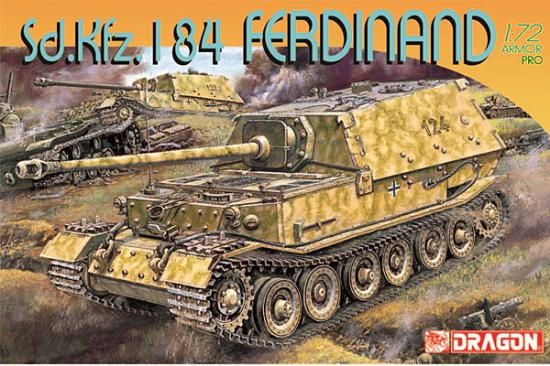Assembled model 1/72 German tank destroyer Sd.Kfz.184 Ferdinand Dragon D7344 Ferdinand or Elefant (Sd.Kfz 184) is a German tank destroyer of World War II. The first prototypes of the car were created in 1942, and serial production continued only in 1943, ending with the release of only about 90 cars. Ferdinand was equipped with two 300 hp Maybach HL 120 TRM engines. each one It was armed with 1 88 mm PaK 43 L / 71 gun and later 1 7.92 mm MG34 machine gun. Ferdinand was created at the Porsche and Alkett factories on the basis of the chassis of the Tiger heavy tank, which was not accepted into mass production, developed by the first company. Serial production took place at the Nibelungenwerke factory in Styria, Austria. The new tank destroyer had an excellent anti-tank gun, capable of destroying any armored vehicle of the Red Army and allies of the time. It was also very well armored - suffice it to say that it was protected from the front by 200 mm of steel, which made it unreachable for enemy equipment at a distance of more than 500 m. !) and at the beginning of its combat career it did not have a machine gun - later, in at the end of 1943, it was changed. Ferdinands made their debut during the Battle of Kursk in July 1943 as part of the 656th Armored Gun Regiment, where they destroyed almost 320 units of enemy equipment! However, they themselves suffered relatively large losses. After this battle, the surviving machines were transferred to Germany and modernized, for example, before the addition of Zimmerite. After modernization, they fought mainly on the Eastern Front until the end of the war, with a brief episode (February-June 1944) on the Italian front.

















